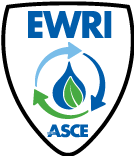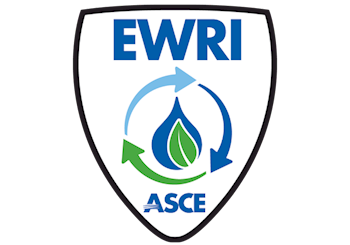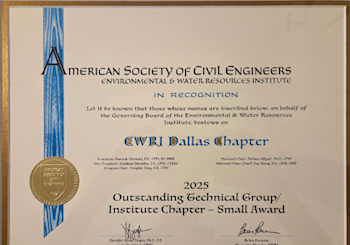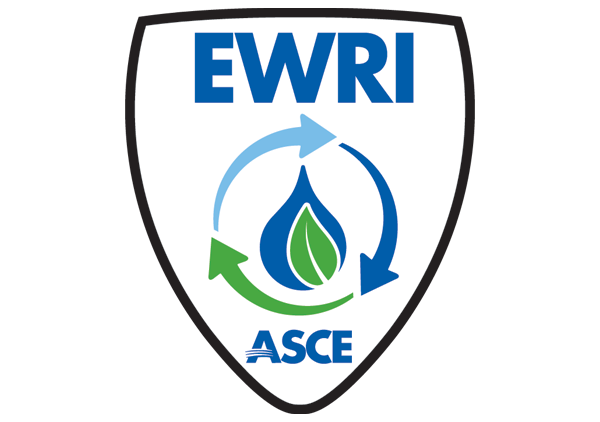
EWRI News

The life cycle of migratory fish, such as a salmon, is amazing. A salmon lays eggs in freshwater gravel beds to hatch. Offspring grow up in freshwater streams and then leave the river to the salty ocean. Juveniles grow in the ocean and then return as adults to swim upstream to their natal freshwater streams and rivers to lay eggs, starting the cycle again.
November 03, 2025

We are living through a pivotal era in civil and environmental engineering, where data is becoming as fundamental as concrete and pipe networks. In water engineering, the proliferation of sensors, cloud infrastructure, and high-performance computing now make it possible to tackle complexities previously out of reach. Recognizing this moment of convergence, EWRI approved the establishment of the Task Committee on Machine Learning and Artificial Intelligence in Water Engineering at the end of 2024, with the goal of fostering the integration of ML/AI into research and practice across water systems.
November 03, 2025

Ponds are used for stormwater management throughout the world, providing the crucial function of runoff detention and removal of particles and associated nutrients such as phosphorus (P) and other pollutants, mitigating risks of eutrophication of receiving water. As many stormwater ponds are now decades old, their treatment performance may be degraded from accumulating organic matter and encroachment of vegetation, leading to low dissolved oxygen (DO) and sedimentary P release.
October 31, 2025

Pasco County, located along Florida’s Gulf Coast north of Tampa Bay, faces increasing vulnerabilities to coastal flooding, erosion, and sea level rise. To address these challenges, the County launched the Resilient Pasco Project, its first comprehensive effort to develop a long-term resilience and sustainability framework.
October 31, 2025

American Society of Civil Engineers (ASCE) Manual of Practice (MOP) 150, titled “Total Maximum Daily Load Development and Implementation: Models, Methods, and Resources,”* focused on the state of the practice for common pollutants of concern in watershed and water quality modeling (e.g., nutrients and sediments).
October 31, 2025


On July 28, 2025, the Curve Number Hydrology Task Committee, under the auspices of ASCE/EWRI, convened an online recognition ceremony for Dr. Richard H. “Pete” Hawkins. The ceremony recognized Dr. Hawkins for “… his decades of contributions to the deep understanding and wise use of curve number hydrology.” As part of the ceremony, Brian Parsons, Managing Director Environmental & Water Resources Institute and ASCE Chief Sustainability Officer, presented Dr. Hawkins with a certificate of appreciation, gratitude, and recognition.
October 31, 2025

Efforts to standardize evapotranspiration (ET) methodology have progressed over the last few decades, yet confusion about ET terminology remains. To provide a more reliable foundation for communications in water resource planning and irrigation management, a new technical note is now publicly available in ASCE Journal of Irrigation and Drainage Engineering, titled “Evapotranspiration Terminology and Definitions”.
October 31, 2025

President’s Message - Revitalizing our Institute! Fall marks the beginning of the biggest privilege of my professional career, to serve as president of ASCE’s Environmental and Water Resources Institute.
October 31, 2025

The Environmental & Water Resources Institute (EWRI) Dallas Chapter was recently recognized with the Outstanding Technical Group/Institute Chapter — Small Award. This honor reflects the dedication and hard work of our members. This article provides an overview of the EWRI Dallas Chapter’s recent activities, initiatives, and goals towards advancing the environmental and water resources engineering profession.
July 28, 2025

The Total Maximum Daily Load or TMDL refers scientifically to the maximum amount of a pollutant a waterbody can have without harm, whereas in regulatory context, it is a document or plan of action to restore impaired water bodies. Developing such a document (TMDL) is challenging as there exists no clear guidance in selecting from numerous models and analytical approaches used, among many others.
July 28, 2025

